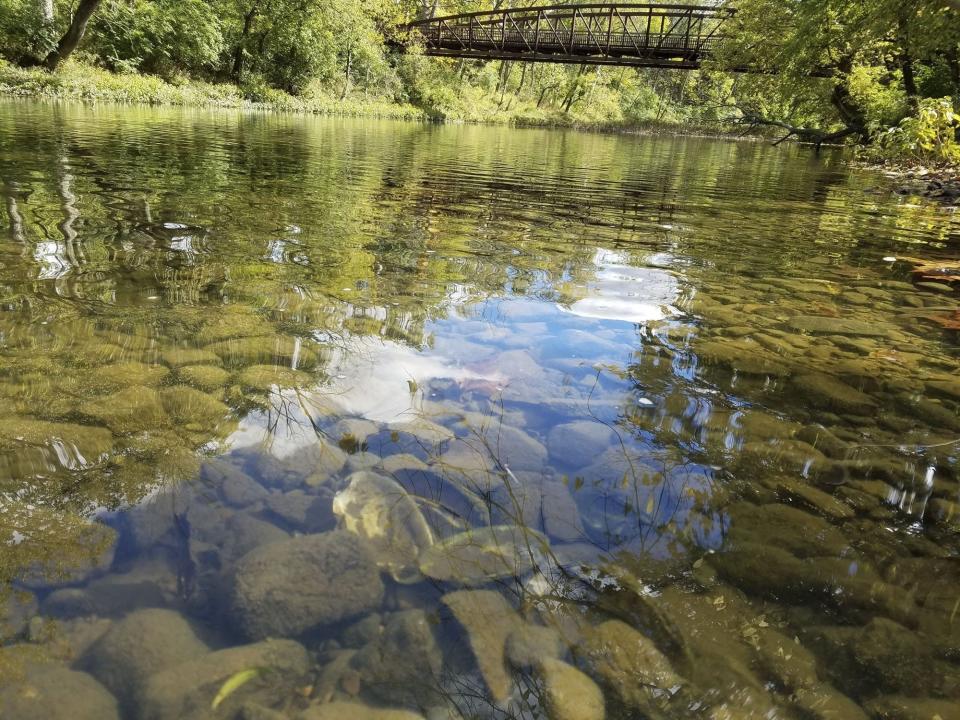Environmentalists: Supreme Court decision favors development in Columbus over waterways
A U.S. Supreme Court decision last week could make development easier in a booming Greater Columbus by reducing protections for area waterways, environmentalists say.
The 5-4 decision on Thursday weakens the U.S. Environmental Protection Agency's ability to enforce the Clean Water Act, they say. The Ohio Environmental Council, for one, called the decision "anti-science and pro-polluter," one that strikes down protections for millions of acres of wetlands and will cause "disastrous impacts" for thousands of wetland acres in Ohio.

"Under the decision, wetlands without a continuous link to navigable waters or their tributaries are not protected," the group said in a statement. "Ohio has already lost a shocking 90% of its wetlands. This destructive ruling endangers our state’s remaining 10% of wetlands and puts Ohio’s 36,000 miles of rain-dependent streams at risk. Swamps, bogs and marshes are not only safe havens for hundreds of migratory and endangered birds, but these wetlands are critical to reducing harmful algal blooms."
More: Environmentalists wants Ohio EPA to ensure more Big Darby protections with sewage loans
Melanie Houston, the group's managing director of water policy, said in a statement that without continued state protection or new federal protections, the Supreme Court’s decision opens the door for polluters to further degrade Ohio’s wetlands.
The U.S. Supreme Court case, involved a couple, Michael and Chantell Sackett, who bought property near Priest Lake, Idaho, and began backfilling the lot with dirt for a new house.
The U.S. Environmental Protection Agency told the Sacketts that their property had wetlands and that the backfilling violated the Clean Water Act. That prohibits discharging pollutants into "the waters of the United States." The EPA classified the wetlands as such because they were near a ditch that fed into a creek that fed into Priest Lake.
The EPA ordered the Sacketts to restore the site, and threatened penalties of more than $40,000 per day. The Sacketts sued the EPA, arguing that their property was not “waters of the United States.”
In a 5-4 decision on May 25, Justice Samuel J. Alito Jr., writing for the conservative majority, said the court majority said the Clean Water Act extends to only those “wetlands with a continuous surface connection to bodies that are ‘waters of the United States’ in their own right,” so that they are “indistinguishable” from those waters.
"The wetlands on the Sacketts’ property are distinguishable from any possibly covered waters," it said.
In a dissenting opinion, liberal Justice Elena Kagan wrote that the Clean Water Act spells out that the waters of the United States include wetlands adjacent to waters the act covers, and that adjacent not only means when it is touching but also nearby.
"And make no mistake: Congress wrote the statute it meant to," she wrote.
Anthony Sasson, a research associate with the Midwest Biodiversity Institute in Hilliard, said with the court's decision, ephemeral streams — which flow only after rains or with water from snowmelt — could be eliminated, perhaps some replaced with retention ponds.
"What is the environmental outcome in removing ephemeral streams from protection?" he said. Some urban areas could see poorer stream quality downstream, he said, which could be affected by different water flow and temperature, he said.
Sasson also said that developers wouldn't have to provide mitigation when building on these sites, such as being required to replace a stream with another somewhere else.
In an emailed statement, the Ohio Environmental Protection Agency said it is still reviewing the Supreme Court decision as to how it affects Ohio.
Others applauded the Supreme Court, including the Ohio Coal Association, which also referenced the court's 9-0 decision that the federal government overstepped its authority regarding the Sacketts' specific situation.
"We are encouraged that the Biden EPA's relentless crusade against Ohio coal miners and power plants are continuing to lose in federal court," Justin Bis, president of the Ohio Coal Association, said in an emailed statement.
In April 2022, Gov. Mike DeWine signed House Bill 175, an environmental bill that homebuilders wanted, but environmentalists say a provision deregulates ephemeral streams and could contaminate drinking water, destroy fish habitats and worsen flooding.
DeWine spokesman Dan Tierney said environmental groups tend to want to see federal regulation.
He said in general federal law has covered navigable waters and tributaries. Other areas were generally regulated by state governments.
Tierney said that when President Barack Obama's administration issued final rules on the Waters of the United States plan in 2015, it was too broad, covering things that states had regulated.
"We look at it as a 10,000-foot thing. It doesn't mean there are no regulations. It's state regulation as opposed to different regulations," he said.
"Governor DeWine values the environment," Tierney said.
Tierney did say that the governor wants predictability for homeowners and businesses.
"Land was being prevented from being developed," Tierney said.
Chris Tavenor, associate general counsel for the Ohio Environmental Council, said that though House Bill 175 went into effect in July 2022, it includes language that shifts its definitions when federal law also shifts.
Tavenor said the court's decision impacts the state's definition of ephemeral features and how they relate to Ohio's definition of "waters of the state."
"Ephemeral streams, while seasonal, provide essential hydrological, biological and public health benefits to larger rivers and the communities dependent on those waters for drinking and recreating," Tavenor said in an emailed statement. He said the court's decision to eliminate federal protections reinforces how critical it is that Ohio takes statewide action to protect rain-dependent streams.
Alana Shockey, a deputy director in the Columbus Department of Public Utilities focusing on sustainability and regulatory compliance, said the court ruling doesn't affect city wetland policies in stream corridor protection zones.
mferench@dispatch.com
@MarkFerenchik
This article originally appeared on The Columbus Dispatch: U.S. Supreme Court decision will harm Ohio waterways, some say
